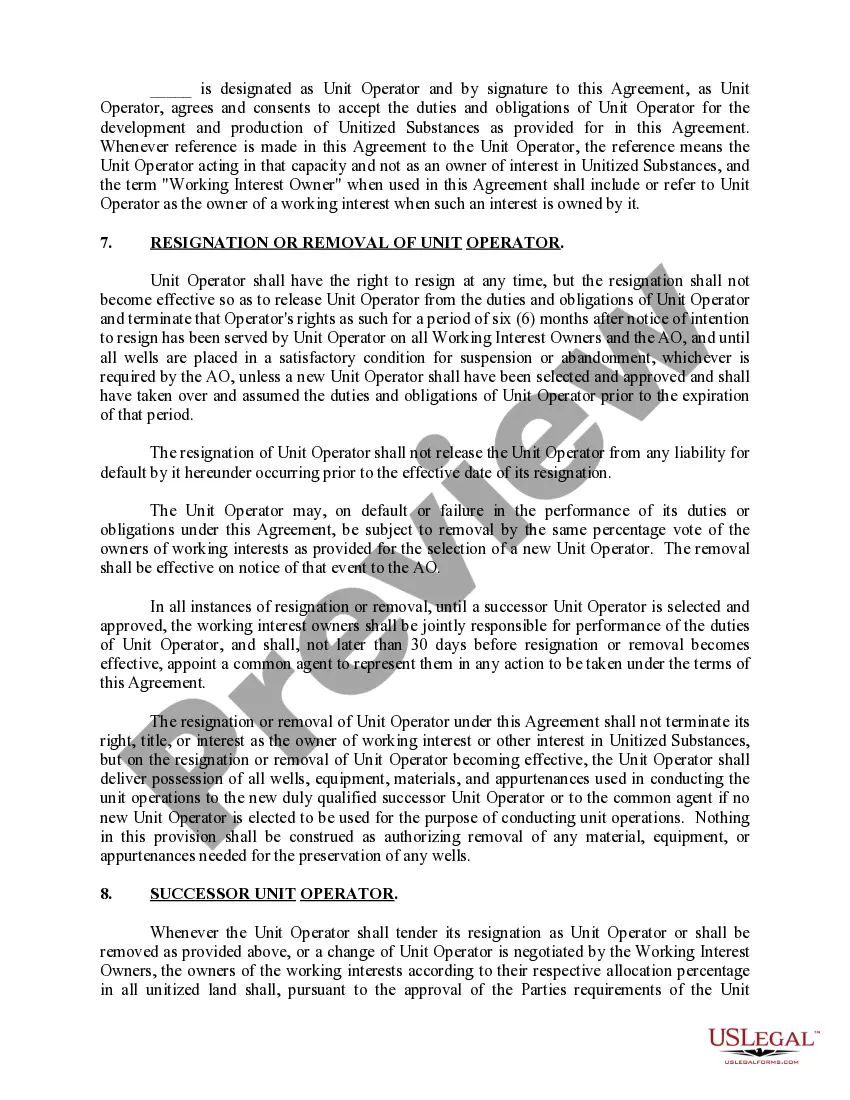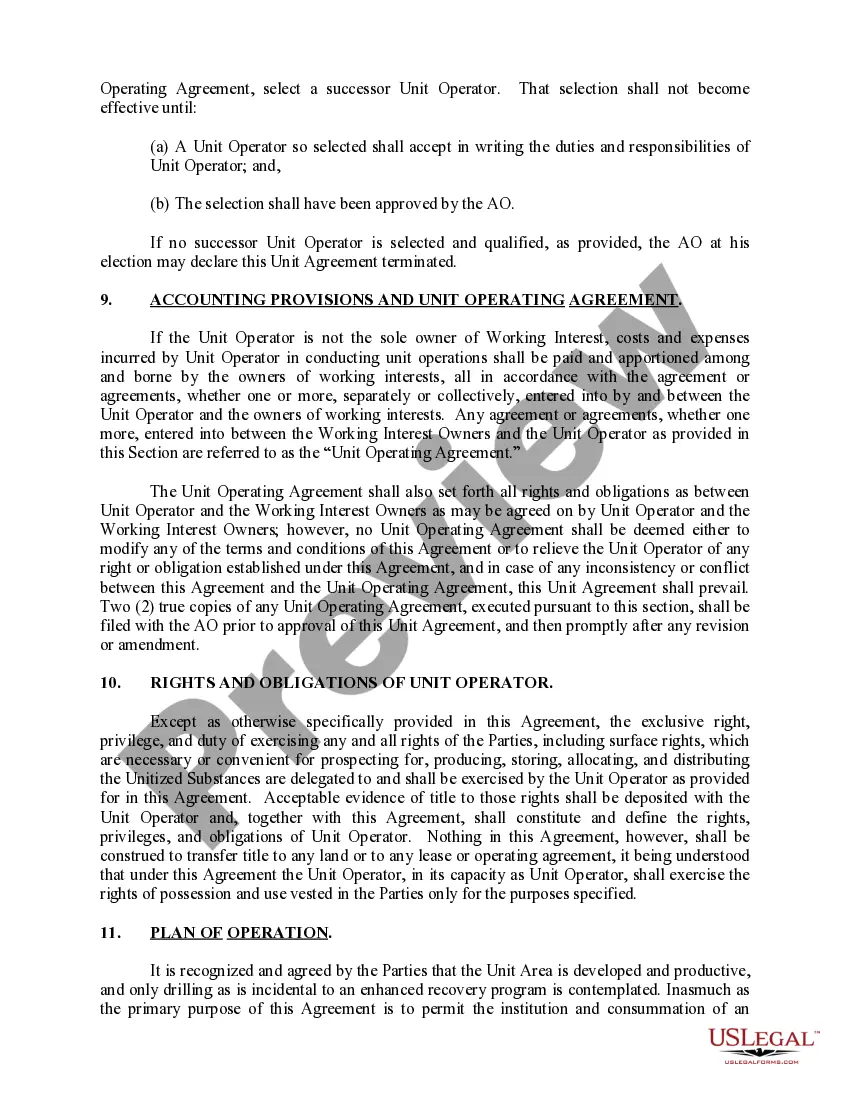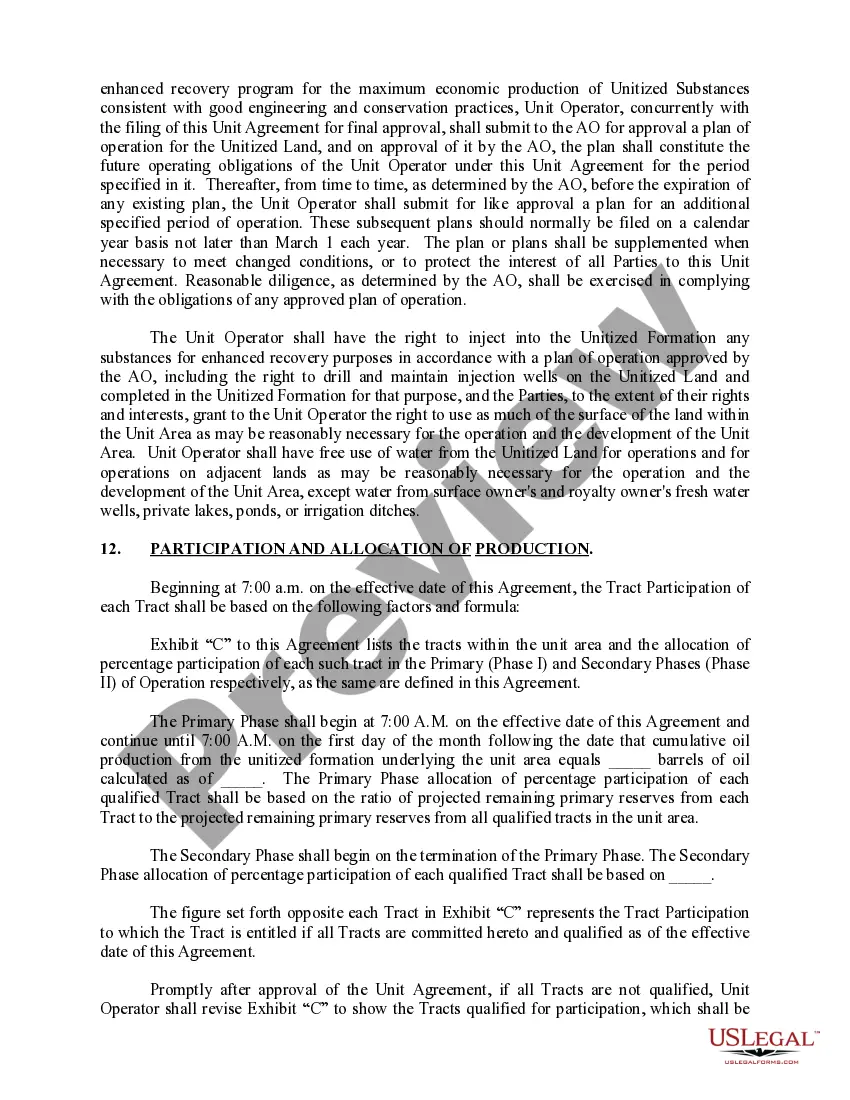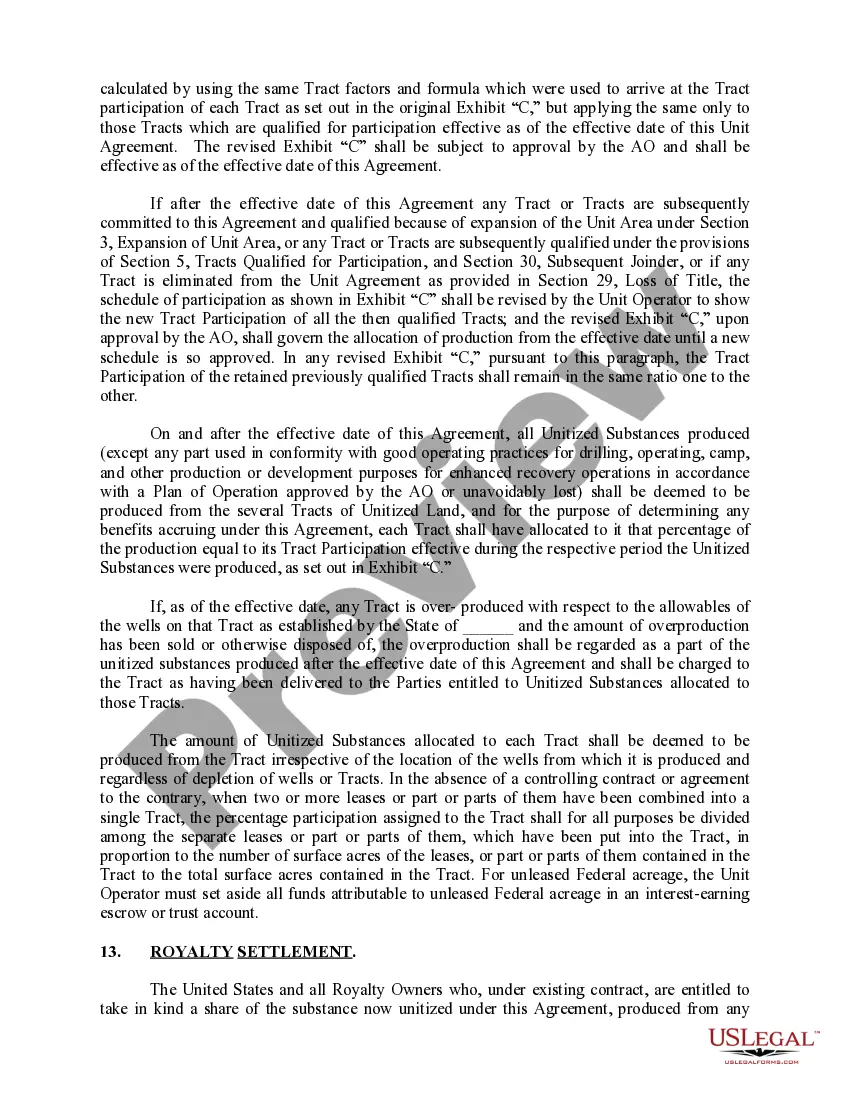This Agreement is entered into, between the parties subscribing, ratifying, or consenting to it. The Parties are the owners of working, royalty, or other oil and gas interests in the Unit Area subject to this Agreement.
The Mineral Leasing Act of February 25, 1920, 41 Stat. 437, as amended, 30 U.S.C., Secs. 181 et seq., authorizes Federal lessees and their representatives to unite with each other, or jointly or separately with others, in collectively adopting and operating a cooperative or unit plan of development or operation of all or any part of any oil or gas pool, field, or like area, for the purposes of more properly conserving the natural resources whenever determined and certified by the Secretary of the Interior of the United States, to be necessary or advisable in the public interest.
The Michigan Unit Agreement and Plan of Unitization is a legal framework implemented in the state of Michigan to facilitate the proper management and extraction of oil, gas, and other minerals from underground reservoirs. It allows multiple parties, often with ownership interests in the same reservoir, to collectively operate and develop the resources in an efficient and coordinated manner. Under a Michigan Unit Agreement and Plan of Unitization, parties agree to pool their resources and assets within a defined geographical area, known as a unit. This unit represents a specific reservoir or set of reservoirs that they jointly own. By consolidating their interests, the parties can effectively operate the reservoir as a single entity, optimizing production and minimizing costs. The primary objective of a Michigan Unit Agreement and Plan of Unitization is to prevent the inefficient and wasteful extraction of minerals that might occur if each party were to independently drill and produce from their respective tracts of land within the reservoir. It ensures that the reservoir is developed holistically, enabling the adoption of advanced extraction techniques, such as horizontal drilling and enhanced reservoir recovery methods. There are different types of Michigan Unit Agreements and Plans of Unitization that can be implemented, depending on the specific characteristics of the reservoir and the parties involved. Some common types include: 1. Voluntary Unitization: In this type, all the parties involved voluntarily agree to form a unit and share the costs, risks, and proceeds of the operations according to their proportionate interests. 2. Compulsory Unitization: This type is imposed by a regulatory authority, typically to resolve disputes or conflicts arising between multiple parties over the extraction and ownership of resources in a reservoir. It requires all affected parties to participate in the unitization agreement and align their interests accordingly. 3. Enhanced Recovery Unit: In cases where conventional extraction methods have been exhausted, an enhanced recovery unit may be formed. This allows for the implementation of advanced techniques, such as water or gas injection, to increase the overall recovery of resources from the reservoir. Michigan Unit Agreements and Plans of Unitization also outline important guidelines and provisions related to the allocation of costs, royalties, and other financial aspects. They establish the roles and responsibilities of the parties involved, including their rights to access the reservoir, conduct operations, and share production revenues. In conclusion, the Michigan Unit Agreement and Plan of Unitization is a crucial mechanism that ensures the optimal management and extraction of oil, gas, and other minerals from reservoirs in Michigan. By pooling resources, coordinating operations, and allocating costs and royalties appropriately, it enables efficient and sustainable development while maximizing the benefits for all stakeholders involved.The Michigan Unit Agreement and Plan of Unitization is a legal framework implemented in the state of Michigan to facilitate the proper management and extraction of oil, gas, and other minerals from underground reservoirs. It allows multiple parties, often with ownership interests in the same reservoir, to collectively operate and develop the resources in an efficient and coordinated manner. Under a Michigan Unit Agreement and Plan of Unitization, parties agree to pool their resources and assets within a defined geographical area, known as a unit. This unit represents a specific reservoir or set of reservoirs that they jointly own. By consolidating their interests, the parties can effectively operate the reservoir as a single entity, optimizing production and minimizing costs. The primary objective of a Michigan Unit Agreement and Plan of Unitization is to prevent the inefficient and wasteful extraction of minerals that might occur if each party were to independently drill and produce from their respective tracts of land within the reservoir. It ensures that the reservoir is developed holistically, enabling the adoption of advanced extraction techniques, such as horizontal drilling and enhanced reservoir recovery methods. There are different types of Michigan Unit Agreements and Plans of Unitization that can be implemented, depending on the specific characteristics of the reservoir and the parties involved. Some common types include: 1. Voluntary Unitization: In this type, all the parties involved voluntarily agree to form a unit and share the costs, risks, and proceeds of the operations according to their proportionate interests. 2. Compulsory Unitization: This type is imposed by a regulatory authority, typically to resolve disputes or conflicts arising between multiple parties over the extraction and ownership of resources in a reservoir. It requires all affected parties to participate in the unitization agreement and align their interests accordingly. 3. Enhanced Recovery Unit: In cases where conventional extraction methods have been exhausted, an enhanced recovery unit may be formed. This allows for the implementation of advanced techniques, such as water or gas injection, to increase the overall recovery of resources from the reservoir. Michigan Unit Agreements and Plans of Unitization also outline important guidelines and provisions related to the allocation of costs, royalties, and other financial aspects. They establish the roles and responsibilities of the parties involved, including their rights to access the reservoir, conduct operations, and share production revenues. In conclusion, the Michigan Unit Agreement and Plan of Unitization is a crucial mechanism that ensures the optimal management and extraction of oil, gas, and other minerals from reservoirs in Michigan. By pooling resources, coordinating operations, and allocating costs and royalties appropriately, it enables efficient and sustainable development while maximizing the benefits for all stakeholders involved.











